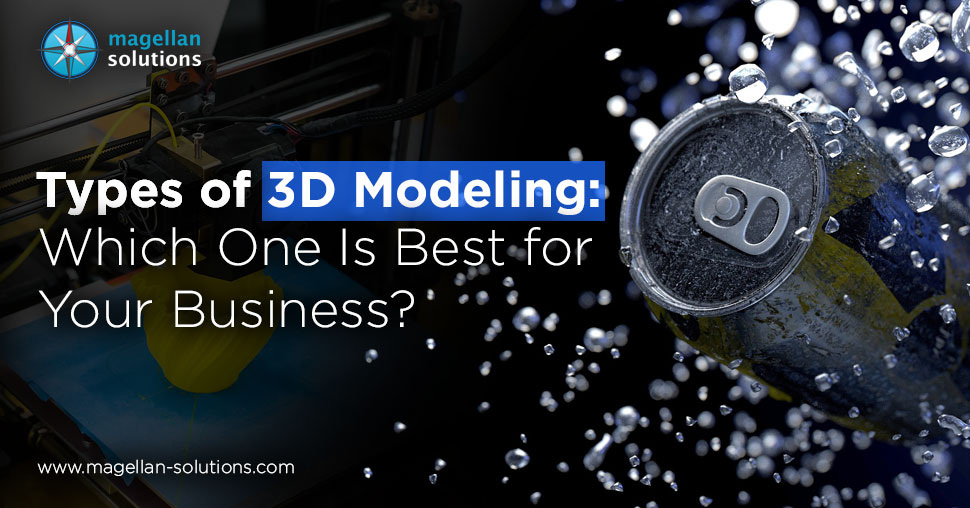Schedule a FREE call with our outsourcing expert now and get a precise quotation that meets your requirements. Don't wait - get started today!
The 3D industry is a natural response to our technologies becoming more personal. More and more industries, from entertainment to architecture, are incorporating 3D technology into their business.
3D Modeling seems simple, but not all objects are easy to produce. Some require specific modeling techniques and editing software to ensure the 3D design comes out as planned. Let us give you a simple, in-depth guide to this worthy craft.
What is 3D Modeling?
Let’s say you already have 3D modeling software and tools — now what? There would be some errors along the way (some costly), but it is a start and a learning curve.
To begin, you can take a 2D object and scale its dimensions. Another option would be to trace the object’s dimensions and recreate a 3D-scanned real-world object to prepare it for 3D printing.
The main goal of 3D modelers is to create highly immersive or realistic graphics. This requires careful practice and refined skills. As a 3D modeler, you have to be capable of creating anything, from simple 3D shapes to models that exactly replicate complex real-world objects.
While you can learn 3D Modeling, it has a significant learning curve compared to other graphic arts fields. It requires mastering 3D modeling programs and techniques, which can take a very long time to achieve. For this reason, outsourcing is ideal for businesses that want to enhance or create their 3D models.
Industries That Use 3D Modeling
You’d be surprised to learn that what you see, buy, take as a prescription, or interact with probably has 3D-printed components, if not its entirety. Here’s how different industries apply 3D technology to their business:
Film and Television
creating CGI environments, characters, objects, and animations for TV shows and films. 3D Modeling is also used to develop props quickly. Some examples that you may know of are:
- Hit fantasy TV show ‘Game of Thrones is known for its intricate CGI; most of its props are also 3D printed.
- ‘Iron Man 2‘ was one of the first movies to use 3D-printed props.
Video Games
3D modeling uses the same processes as TV/film, but often on a grander scale. Here, the technique is used to create all the 3D visual components of the game. Famous examples include:
- Ghost of Tsushima is lauded as one of the best-looking video games ever, with highly detailed character and landscape graphics.
- Minecraft, the beloved sandbox game, uses 3D Modeling to create a vast, immersive world. Now, players can also use 3D models for their Minecraft creations or make Minecraft mods using 3D modeling.
Medicine
Medical customization can be easier with 3D Modeling. It can also help when protective equipment is in high demand, like in the COVID-19 pandemic. Some examples are:
- 3D bioprinting of organoids and tissues for treatments and medical procedures
- 3D printing is more efficient in creating dental implants than traditional methods.
Marketing and Advertising
You can market and advertise products even if they are still in production. 3D Modeling also helps in video advertisements and commercials. For example, the Mercedes Vision AVTR is a concept car inspired by the movie Avatar. Thanks to 3D modeling, Mercedes-Benz can release a visualization of this model on its website.
Engineering
You can gain more control over your designs and create a more efficient and precise output. 3D visualizations also make the project easier for clients to understand. For example, mechanical engineers at MIT use 3D Modeling for easier prototyping.
Architecture
Interactive renderings of buildings and structures can be created using 3D Modeling. This makes the construction process more accurate and efficient. A great example is the stadium architecture firm HOK, which uses 3D Modeling and VR for its projects.
Real Estate
3D Modeling is used to replicate real estate properties. These digital and 3D printed models can help clients examine the property for easier sales. If you browse Realtor.com, you will likely encounter 3d models used in real estate listings.
The Types of 3D Modeling
According to 3D artist Erik Selin, there can be as many types of 3D Modeling as there are tools. However, only some of these are widely recognized as actual types of 3D modeling. Here are the most popular ones:
Solid Modeling
Solid Modeling is like building a Lego set. It uses 3D shapes you can assemble, like making blocks, which can reduce or add to the modeled body. This method is straightforward to work with. However, it is not for achieving highly realistic designs.
Polygon modeling
Here, the modeler forms a mesh of flat shapes. The mesh can be manipulated to create the object that you’re modeling. It is suitable for making complex and realistic designs. However, the process is very intricate and can be challenging to pull off.
Wireframe modeling
This technique is great for objects that have complex and curved surfaces. Working on finer details is easier here. However, you might need a better computing capacity for this.
Digital sculpting
Here, the modeler works on a digital clay-like material in the software. It uses special tools or “brushes” to sculpt the virtual clay. The downside of this technique is that it needs special tools and software specifically made for digital sculpting.
Surface modeling
Surface modeling defines the shape and curves of the object using guiding lines. This technique is ideal for developing dynamic designs because it focuses on silhouettes. However, this technique is complex and often requires multiple programs.
Procedural Modeling
Procedural Modeling involves creating specialized programs to generate the object you want. For example, a modeler creates a tool for generating buildings, and they only need to input parameters—like ceiling height, number of floors, and floor area—to develop models that fit the criteria automatically. Although it creates 3D models with relative ease, making the tools is an exhaustive process.
Outsourcing 3D Modeling Services Offer Expert Results
3D Modeling is a complicated, intricate process.
It requires a significant amount of skill and specialized tools. Due to this, many businesses outsource 3D modeling services to third-party companies, which have more experienced and knowledgeable designers and modelers than can expertly craft your 3D concept.
3D modeling outsourcing also provides the following benefits:
- Focus on core operations: in general, outsourcing is made to lessen the workload of your in-house staff. This way, you can leave the 3D Modeling to professionals so that you can focus on the more essential parts of your business.
- Instant access to experts: no need to spend time and money to learn 3D Modeling. When you outsource, you immediately gain access to a professional 3D modeler who can efficiently create your 3D models.
- Inexpensive workforce expansion: you will get expert 3D modeling talent without spending much on recruitment, onboarding, and training. You do not have to pay mandatory employee premiums, as well.
- The best 3D modeling innovations: 3D modeling tools can be costly. However, your outsourced 3D modelers will already have all the necessary tools, software, and equipment—there is no need to spend on new ones to keep up with the latest trends.
- No pauses: if a sudden disaster strikes your area, the 3D modeling process will remain unaffected. The model will not pause or stop until it finishes. Offshore outsourcing further amplifies this benefit.
- Rapid results: your outsourced 3D modelers are dedicated to the task. Unlike in-house modelers, who may have other duties, the sole job of outsourced modelers is to complete your model. They also have the right tools and skills to deliver results rapidly.
Outsource Professional 3D Modeling from the Best.
Magellan Solutions has been an outsourcing service provider in the BPO industry for over 15 years.
In addition to providing prime-quality call center solutions, we offer high-quality 3D modeling services and outsource professional 3D artists and designers. As an ISO-certified company, we can ensure top quality and confidentiality.
Let us bring your designs to life. Talk to us about it here.
Magellan Solutions has been an outsourcing service provider in the BPO industry for over 15 years. We offer high-quality 3D modeling services and can help you hire a 3D modeler. Our company is ISO-certified, so we can guarantee the safety of your data.
















